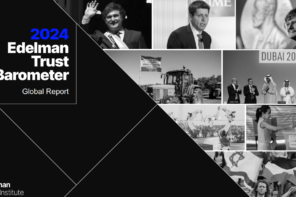
Sunday November 17, 2024
2024 Reuters Report: Implications for PR & Communications
1. The Erosion of Trust in Media: A Call for Authenticity
One of the most notable trends highlighted in the report is the continued decline in trust toward traditional media sources. Only 42% of people trust the news they consume, with the decline particularly noticeable among younger audiences. This presents a significant challenge for PR professionals who rely on media outlets to help shape public perception.
For PR practitioners, this trust deficit underscores the need to place authenticity and transparency at the heart of communications strategies. Consumers are increasingly sceptical of traditional media outlets and are more likely to engage with brands and stories that feel genuine. The role of PR teams is evolving beyond crafting messages for media; now, they must also ensure that the messaging aligns with the audience’s expectations for honesty and transparency. It’s no longer enough to simply “spin” a narrative; trust must be earned through consistent, authentic engagement.
2. The Shift to Digital and Social Media Platforms: A New Era for PR
As news consumption increasingly moves away from traditional outlets and toward digital platforms, PR strategies must follow suit. The report indicates a strong shift in how people access news, with social media platforms such as TikTok, Instagram, and YouTube gaining prominence as primary sources of information. These platforms are especially popular among younger generations, who prefer bite-sized, visual content to in-depth news articles.
For PR professionals, this trend signals a need to adapt communication strategies to meet audiences where they are. This means embracing short-form content such as videos, infographics, and interactive posts, which are more likely to capture attention on social media. Additionally, the emphasis on real-time content creation and leveraging influencer partnerships has become more important than ever. PR campaigns must be agile, creating engaging, shareable content that resonates with younger, digitally native audiences.
The rise of social media as a news source also underscores the importance of media relations in the digital age. PR professionals must build relationships not only with traditional journalists but also with influencers, content creators, and bloggers who have a direct line to their followers. These influencers can often communicate a brand’s message more effectively than traditional outlets, especially when reaching younger, more sceptical consumers.
3. The Role of Algorithms: SEO and Social Media Strategies Are Key
Algorithms are increasingly determining what news people see on their social feeds. As the report suggests, platforms like Facebook and X (formerly Twitter) rely heavily on algorithms to curate content for users, which means PR professionals must optimise their content for discoverability. If PR teams are not thinking about SEO and algorithm-friendly strategies, their content may never reach its intended audience.
This creates an opportunity—and a challenge—for PR professionals. It’s no longer sufficient to simply craft compelling stories. PR campaigns now need to focus on making content optimised for algorithms, ensuring that it reaches the right audiences at the right time. This involves using the right keywords, hashtags, and even posting at optimal times to gain maximum visibility. PR professionals also need to focus on engagement metrics like shares, likes, and comments to boost the algorithmic visibility of their content.
4. Subscription Fatigue: The Rise of Free, Accessible Content
Another crucial trend identified in the 2024 report is subscription fatigue, with fewer people willing to pay for digital news content. This is significant for PR professionals who rely on media outlets to distribute content. As news websites struggle to retain paying subscribers, it creates a shift towards more accessible, free content formats.
For PR professionals, this trend suggests that content must not only be accessible but also engaging enough to compete for attention in an environment saturated with free content. This may involve rethinking how earned media is approached and incorporating more paid media strategies, such as sponsored content or partnerships, to ensure that messages get in front of the right audiences. It also highlights the importance of creating shareable content that can be disseminated through social networks, bypassing paywalls entirely.
5. Polarisation and Echo Chambers: A Growing Challenge for PR
The report also touches on the issue of political polarisation and echo chambers, with many individuals gravitating toward media sources that align with their personal beliefs. This creates an environment where information is consumed in silos, with less exposure to opposing viewpoints. For PR professionals, this poses a challenge in reaching diverse audiences and fostering balanced public discourse.
This trend highlights the importance of crafting messaging that speaks to a broad audience while avoiding alienation. It also underlines the need for PR professionals to engage in “conscious communications” that encourage dialogue and understanding, rather than merely amplifying the voices of those who already agree with a particular viewpoint. PR campaigns should aim to bridge divides, offering diverse perspectives that foster inclusivity and encourage a healthy exchange of ideas.
6. Ethical Journalism and Brand Reputation: A Strategic Priority
As audiences become more discerning and critical of the media, the need for ethical journalism becomes even more important. For PR professionals, this means prioritising accuracy, fairness, and responsibility in their messaging. Brands and organisations that fail to adhere to these ethical standards risk alienating their audience or becoming embroiled in controversy.
In this climate, PR professionals must not only ensure their messages align with journalistic ethics but also be proactive in identifying potential risks. Being transparent about a brand’s values and ensuring alignment with ethical reporting practices will build stronger, more trustworthy relationships with audiences.
Adapting to the Changing Media Landscape
The 2024 Reuters Digital News Report highlights significant changes in the way news is consumed and how people engage with information. For the PR and communications industry, these changes present both challenges and opportunities. As trust in traditional media continues to decline, PR professionals must find new ways to build credibility and foster genuine connections with audiences. By embracing digital platforms, optimising content for algorithms, and focusing on ethical, transparent communication, PR professionals can navigate these shifts and thrive in an increasingly complex media landscape.
The future of PR will demand greater agility, creativity, and a more nuanced understanding of how people consume and interact with information. PR professionals who are able to adapt to these evolving trends will be well-positioned to shape the narratives that matter most in this new digital age.
Curzon PR is a London-based PR firm working with clients globally. If you have any questions, please feel free to contact our Business Development Team bd@curzonpr.com






Follow us